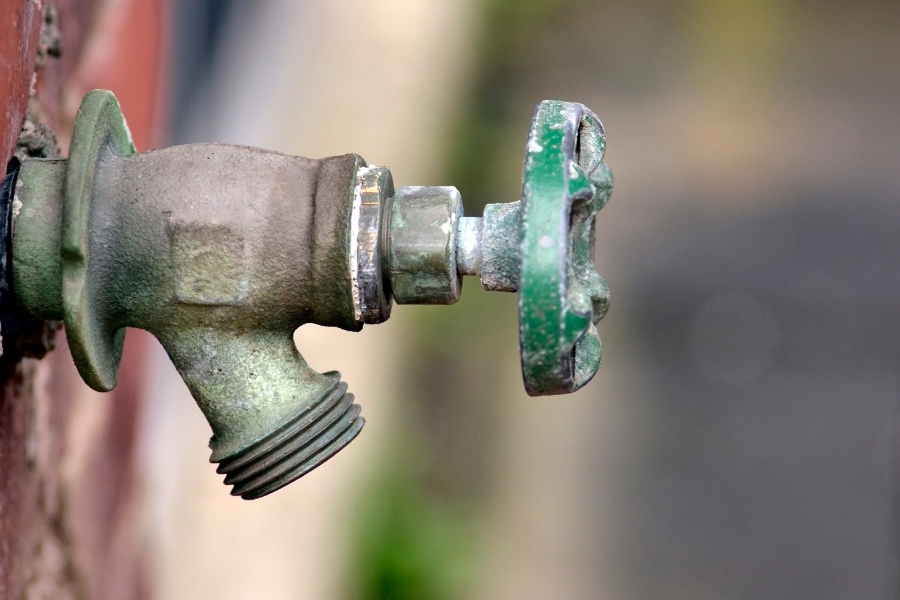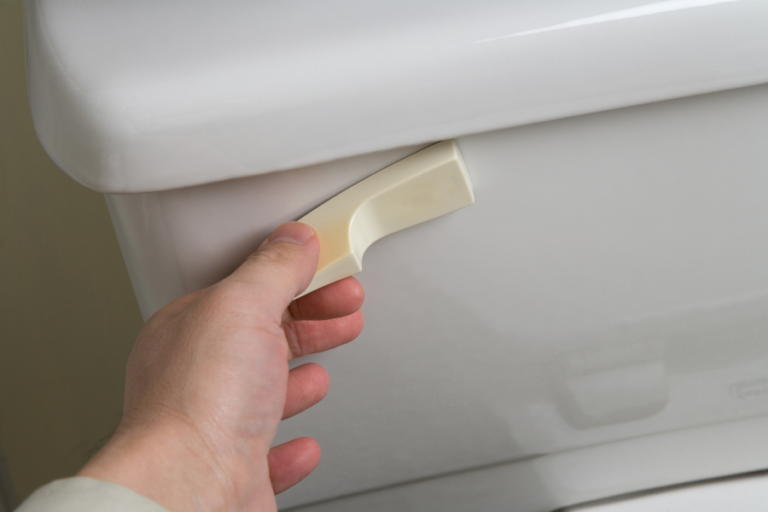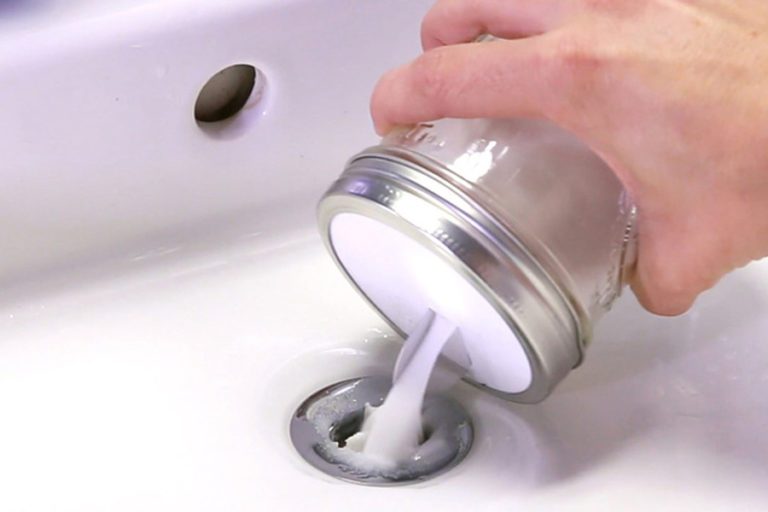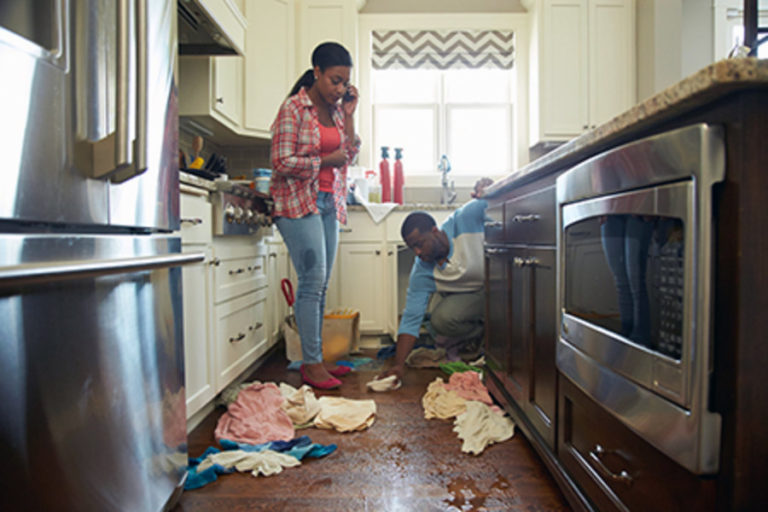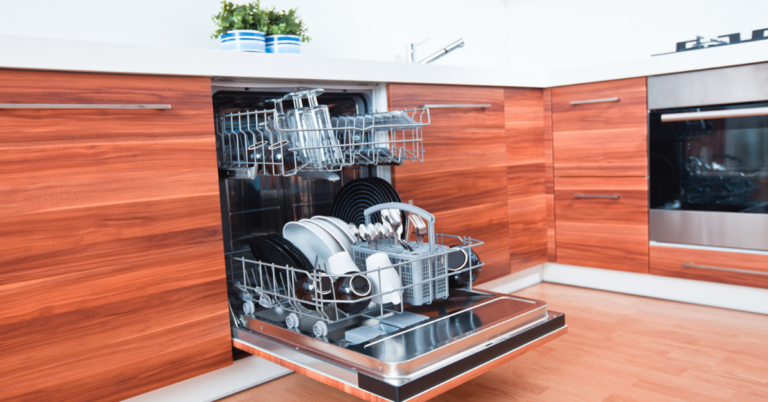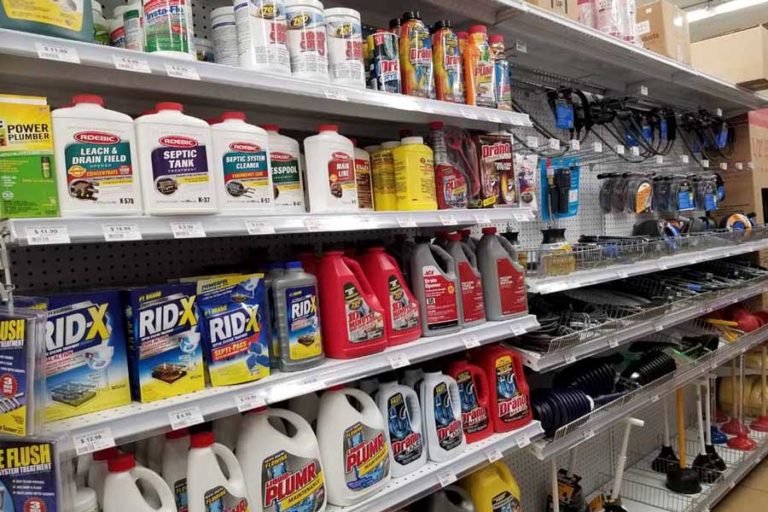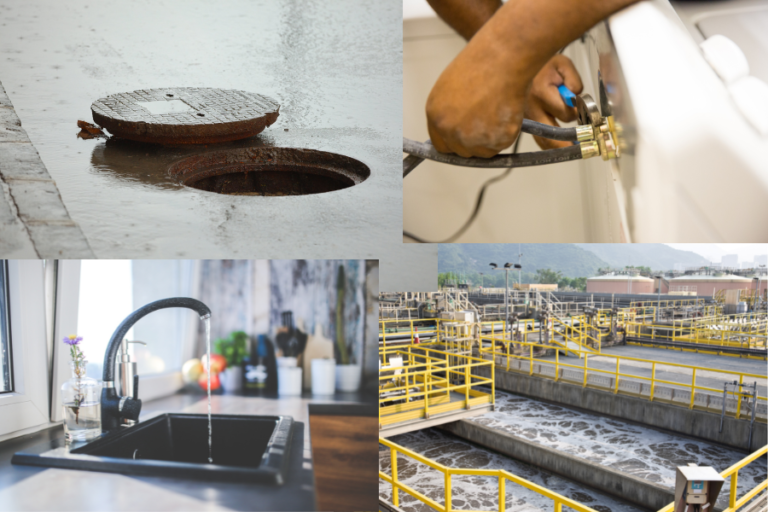How To Dewinterize A Hose Bib: Get Your Home Ready For Spring!
With warm weather approaching and spring on the horizon, it is time to start dewinterizing your home. You’ll want to begin this process by first learning how to dewinterize a hose bib, also called an outdoor faucet or spigot.
Why Winterize Your Faucet?
Failure to correctly drain and switch off your outside hose bibs might result in water remaining in the supply line. This will cause your pipes to freeze, expand, and split the pipe, releasing potentially hundreds of gallons of water into your home when temperatures warm up again.
Winterizing your outside faucets will save you the aggravation of dealing with frozen or broken pipes, and the damage they cause.
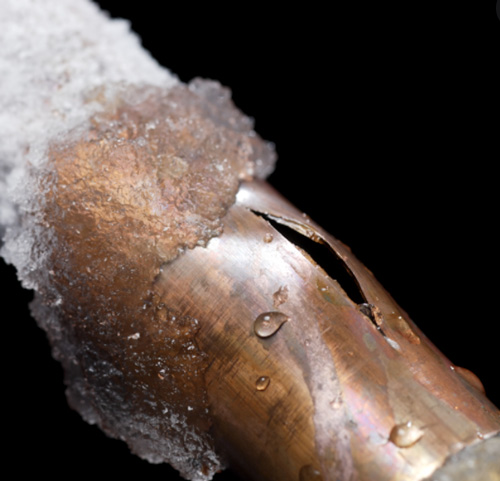
How to Dewinterize a Hose Bib
But what do you do when the birds start chirping and the temperatures stabilize above freezing? Now it’s time to dewinterize your hose bibs. Here’s how to do that in just 4 steps.
1. Remove the Cover
When winterizing your hose spigot, you may have put a styrofoam cover over the spigot to help shield it from freezing temperatures. If this is the case, remove the cover to access the faucet.
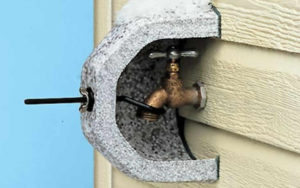
2. Check the Handle
Don’t turn the handle just yet. First, you’ll need to shut the water off at the shutoff valve. It is usually located in the basement of your home (it will be on the pipe near the wall where the outdoor faucet is attached). After shutting off the water, go back outside and check the handle. Turn it counterclockwise to make sure that it isn’t frozen or seized shut.
3. Open the Shutoff Valve
Now, let’s get water flowing again to your hose bib. Turn the shutoff valve back on and check for any leaks surrounding the shutoff valve itself. You will know that the valve is open when it is in the same alignment as the pipe.
4. Check the Hose Bib
Go back outside and open the hose bib. Make sure water is flowing out. Let it run for 30 to 60 seconds. This will remove all of the air that may have built up inside the pipes. Don’t worry if you have dirty water running out of the spigot. This is normal, so just run the water until it clears.
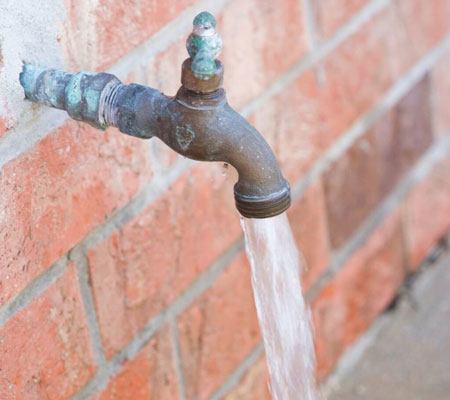
5. Inspect the Spigot & Connect Your Hose
This is the final step. Inspect your hose bib closely to make sure that there are no leaks. After giving it your approval, reconnect the garden hose (or any outside appliance) to the hose bib. If water is flowing through it correctly, then you’ve just finished dewinterizing a hose bib. Repeat this process with all of your outdoor spigots.
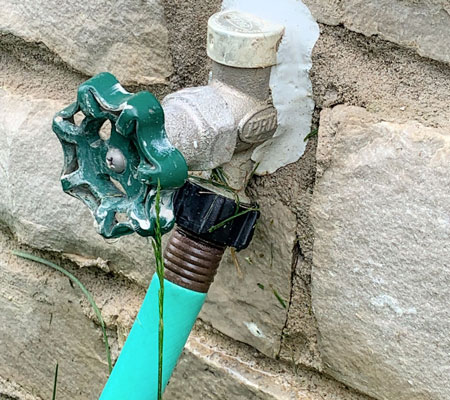
Bonus Tip: Invest in Frost-Proof Hose Spigots
Your home will receive increased protection from split and burst pipes with frost-free hose bibs. What are those?
Frost-free hose bibs have a small downward pitch and a shut-off valve that is many inches inside your home. This keeps your water pipes from freezing. Installing frost-proof hose bibs is the way to go if you don’t want to worry about cracked hose bibs or freezing damage throughout the winter months.
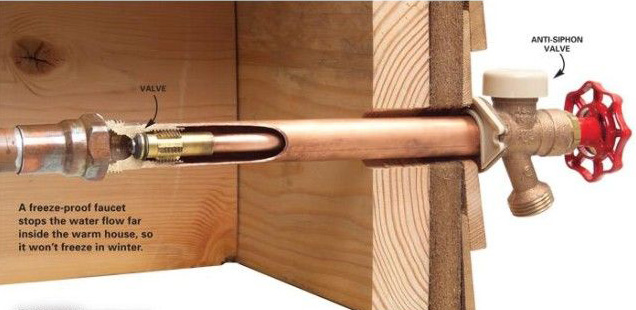
Final Thoughts
Be sure to use these tips to help dewinterize your outdoor hose bibs and prepare them for the warm weather to come. And don’t forget to take the steps necessary in late-Fall to winterize your hose bibs once again.
By winterizing and dewinterizing your hose bibs each year, you’ll prevent an expensive plumbing emergency while keeping your pipes at their best for years to come.
Related Resources
- Prevent freezing pipes from bursting
- How to shut down your plumbing for major repairs
- What’s the difference? Winterization vs Insulation
- Here’s how to winterize a house for complete protection
- Here’s how to insulate exposed water pipes
- How to winterize a house with frost-free spigots
- Don’t risk a cold shower this winter: insulate your water heater
- Learn how to thaw frozen pipes with a hair dryer!
- Prevent freezing pipes from causing water damage
- Remove a stuck garden hose and winterize it properly
- 5 main types of plumbing pipes (pros and cons)
- Water damage services
Call 1-Tom-Plumber
Don’t hesitate to contact us here or call us at 1-Tom-Plumber (1-866-758-6237) if you need help dewinterizing a hose bib or other parts of your plumbing system.
1-Tom-Plumber’s certified team of plumbers and drain technicians respond immediately to any emergency plumbing, drain cleaning, or water damage problem. We also handle the excavation of underground water lines and sewer main lines. Our immediate-response team is available every day and night of the year, even on holidays.

